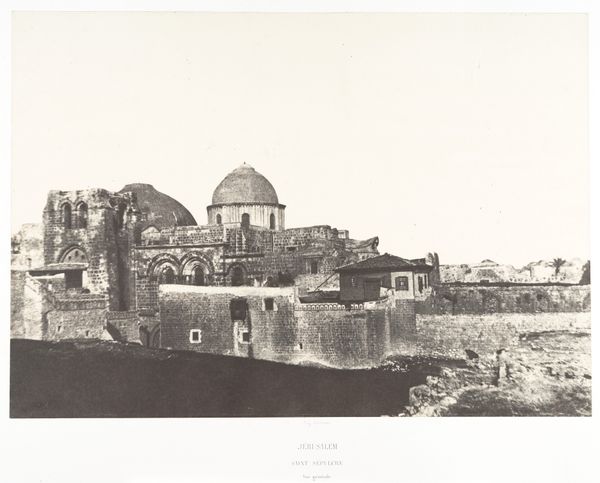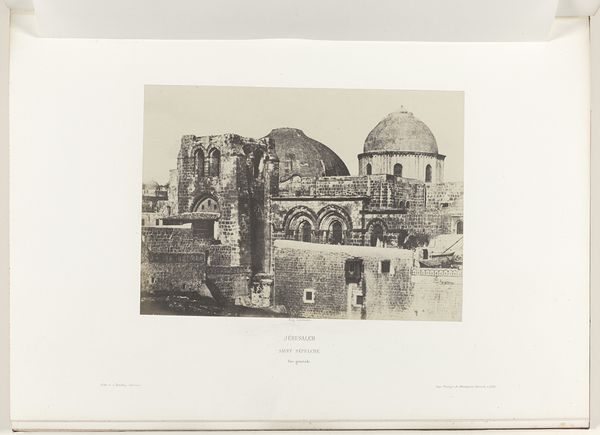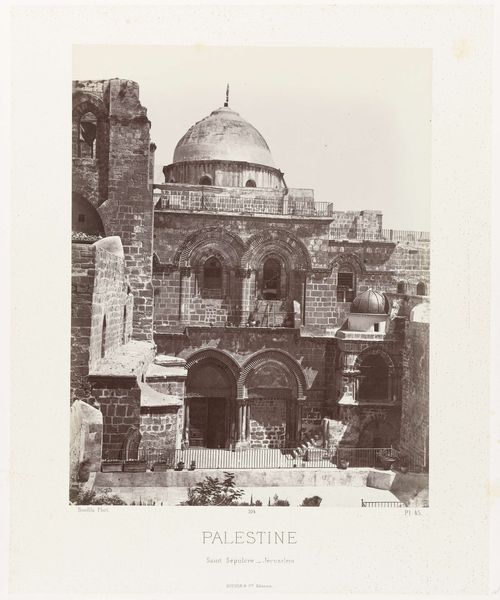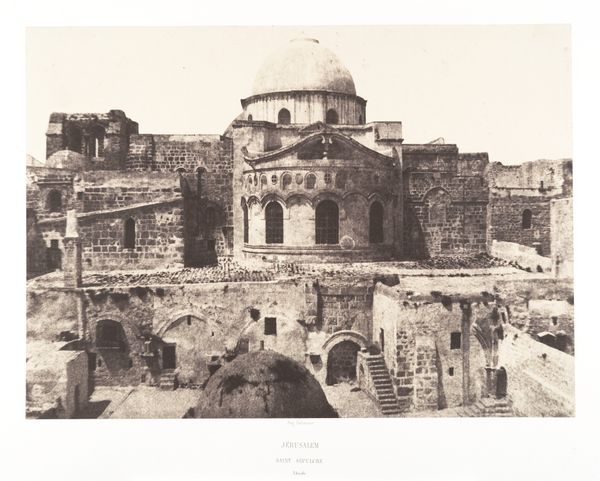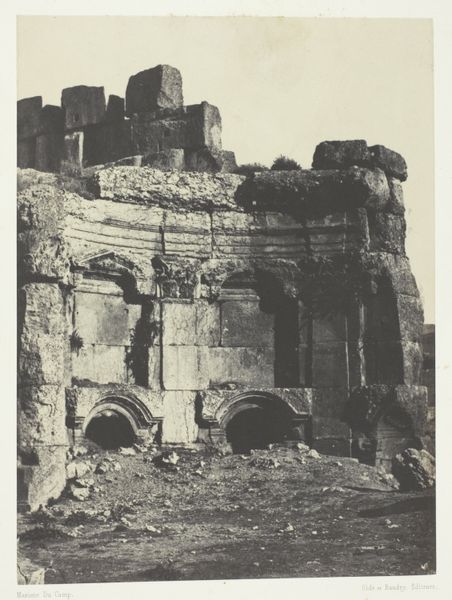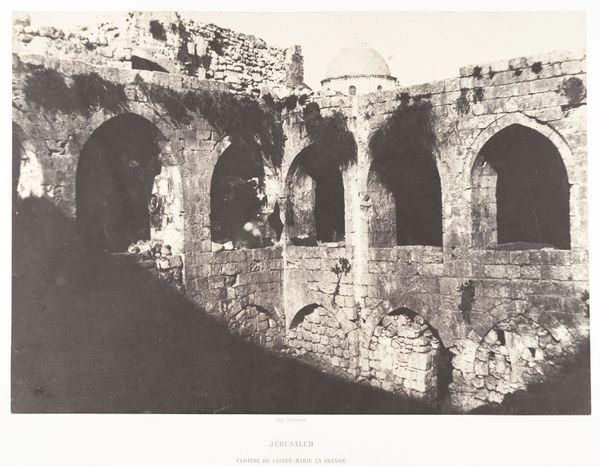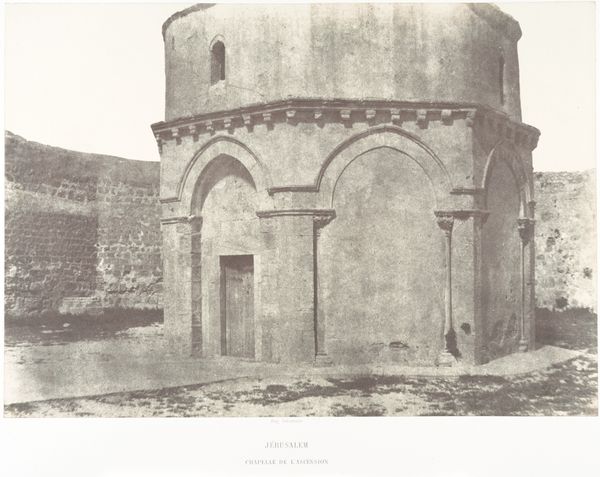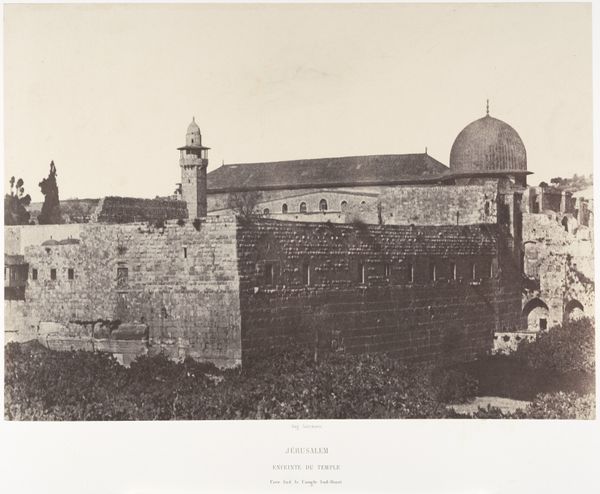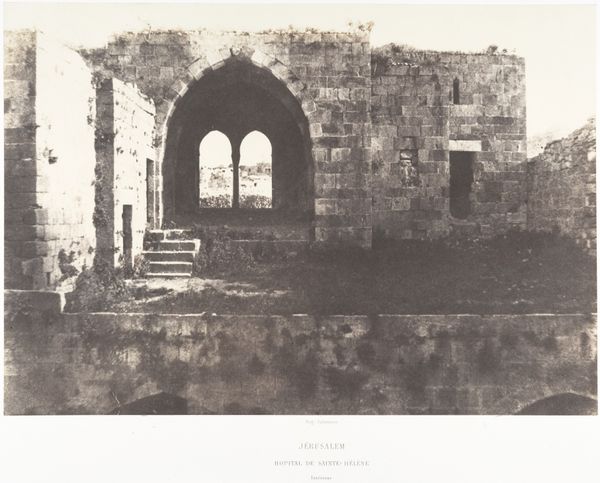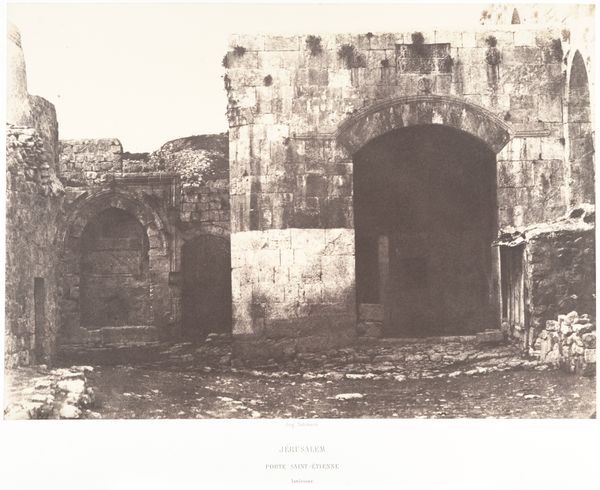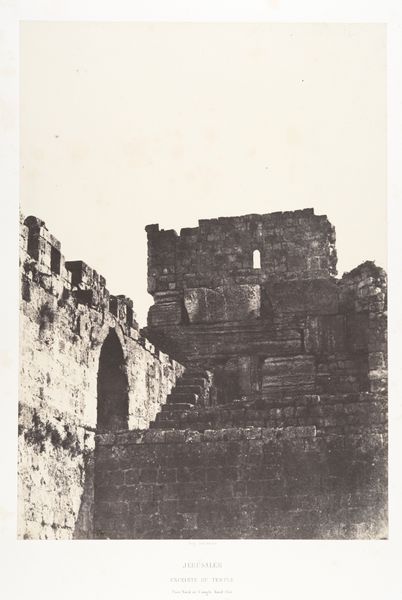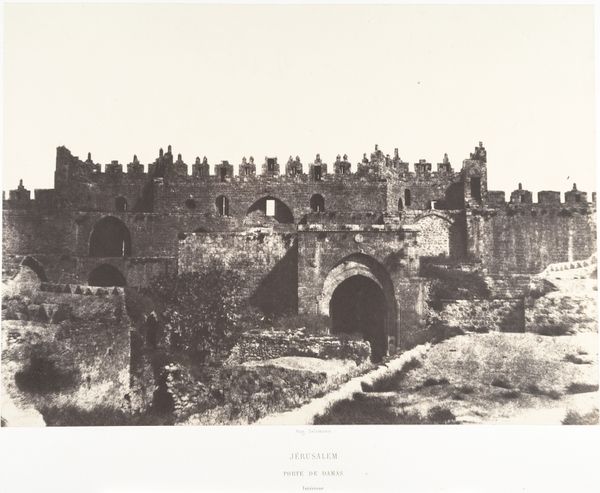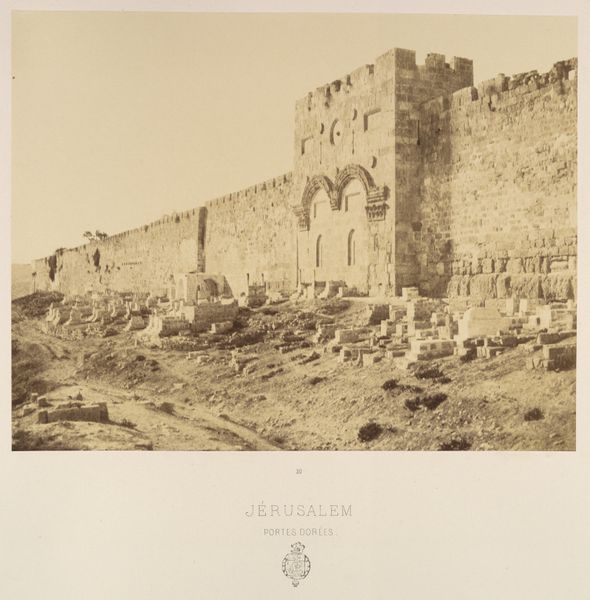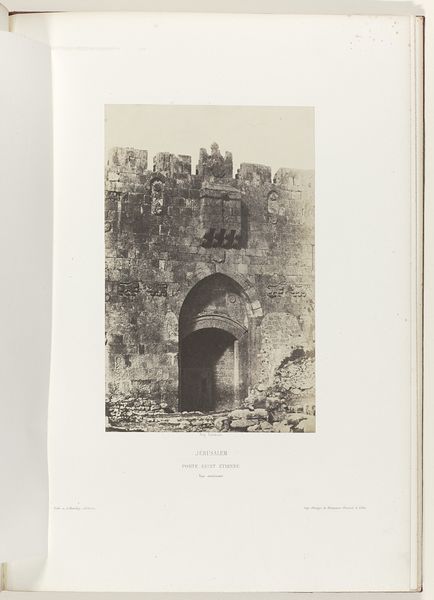
Jérusalem, Saint Sépulcre, vue générale, 2 1854 - 1859
0:00
0:00
daguerreotype, photography, architecture
#
daguerreotype
#
photography
#
ancient-mediterranean
#
islamic-art
#
architecture
Dimensions: Image: 23.2 x 33 cm (9 1/8 x 13 in.) Mount: 44.6 x 60.2 cm (17 9/16 x 23 11/16 in.)
Copyright: Public Domain
Curator: Looking at Auguste Salzmann's daguerreotype, "Jerusalem, Saint Sépulcre, vue générale, 2," made sometime between 1854 and 1859, one is struck by the density of architectural forms rendered in stark clarity. Editor: It does feel dense, almost claustrophobic. The heavy stonework and domed structures loom with a somber grandeur; the monochrome palette seems to emphasize the weight of history. Curator: Salzmann’s choice of the daguerreotype process is critical here. It was a technology still relatively new, allowing for incredible detail. But this view of the Holy Sepulchre speaks to more than technique; this medium was labor-intensive, costly. Its commission likely funded and enabled by powerful, possibly politically motivated interests, hoping to document and thereby stake claims on these holy sites. Editor: The composition itself directs the eye, moving through layers of masonry, archways, and finally settling on the dominating domes. How does that early photographic technology influence the symbolic reading? It isn’t just capturing architecture. Curator: Precisely. The daguerreotype wasn't easily reproducible in its early stages; each plate was unique, made more precious as a physical artifact, imbued with both sacred and secular significance as photographic practice. Think of how it elevates the depiction from simple documentation to something closer to a relic or even holy icon through mechanical means. Editor: I appreciate the way Salzmann uses light. Notice how it models the stones, bringing out their textures and variations. This focus almost monumentalizes the earthly. Curator: Right. The contrast of light and shadow reinforces the substantial, built reality—this tangible presence of stone shaped through labor, over centuries. Editor: A remarkable study in tone and form; It provides a direct link to understanding architectural complexity. The interplay captures both spatial depth and material presence. Curator: And by looking at its formal qualities and tracing back the origins and materials from which it was made, we get closer to its real social, political, and even theological meanings, I think. Editor: It's this merging of technical execution, representational qualities, and materiality that generates interest, I think.
Comments
No comments
Be the first to comment and join the conversation on the ultimate creative platform.
